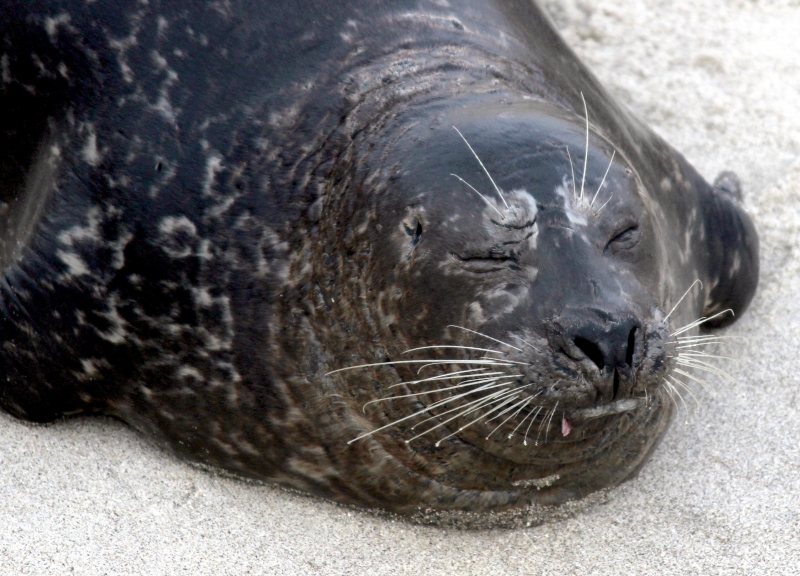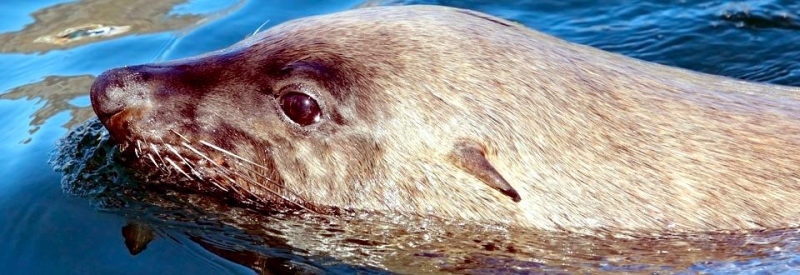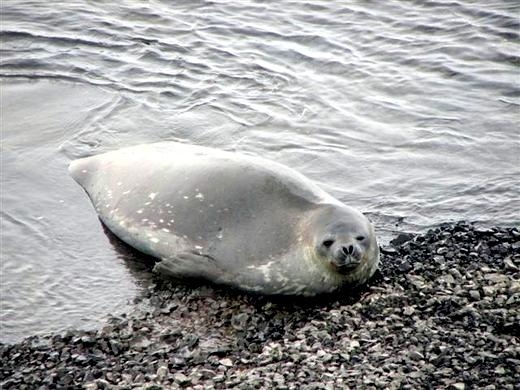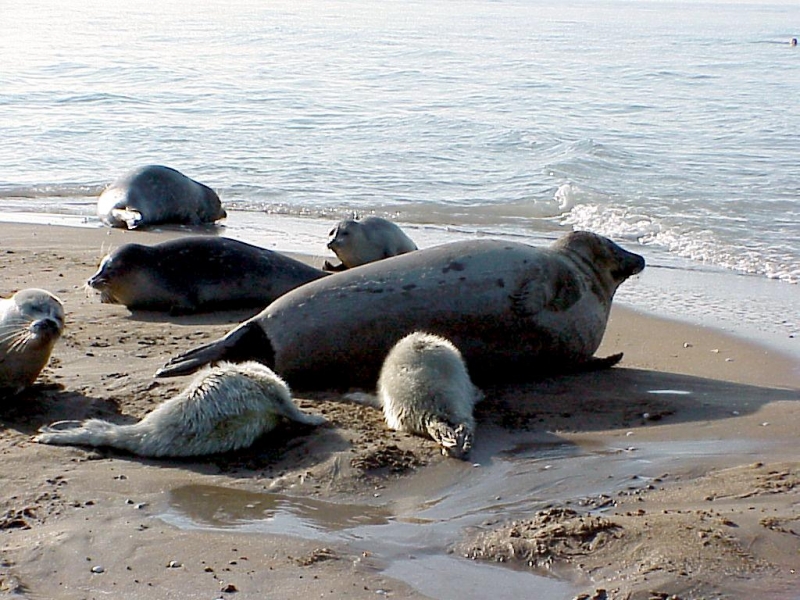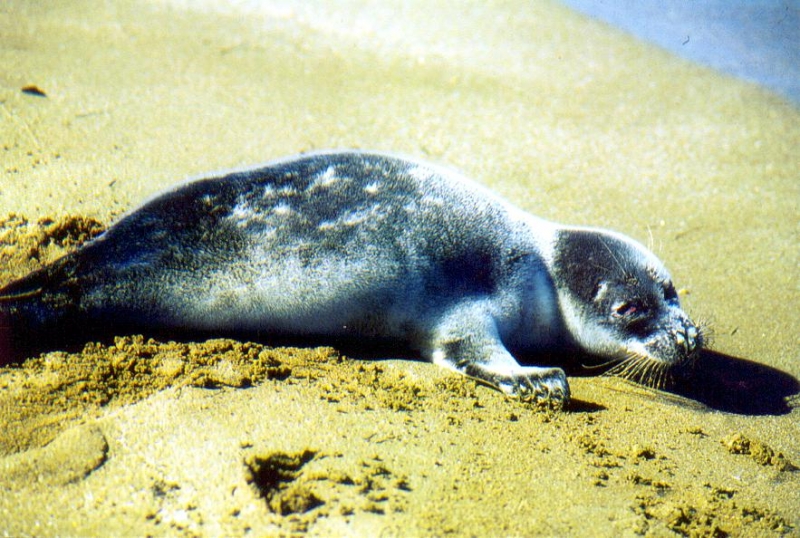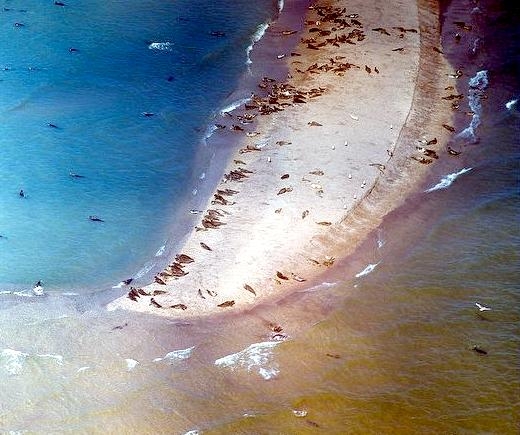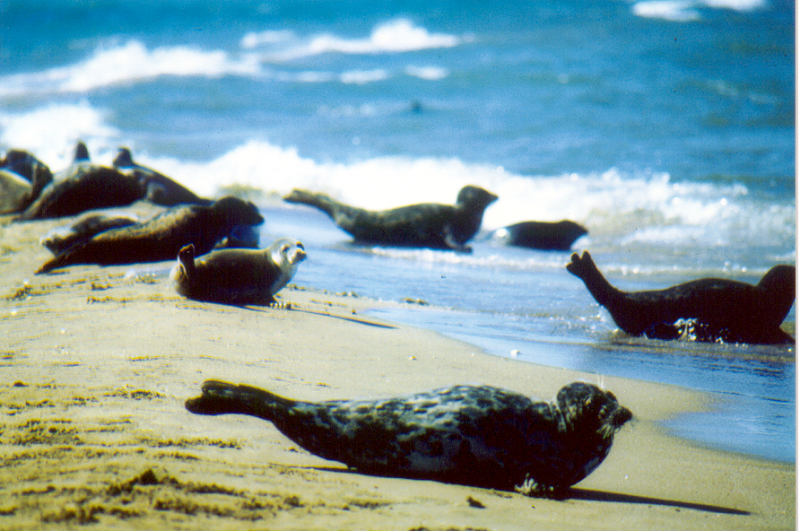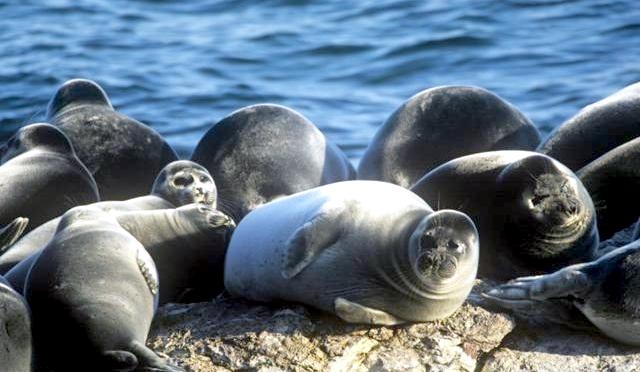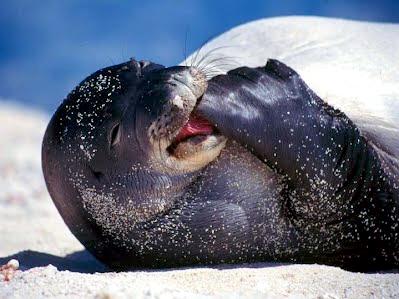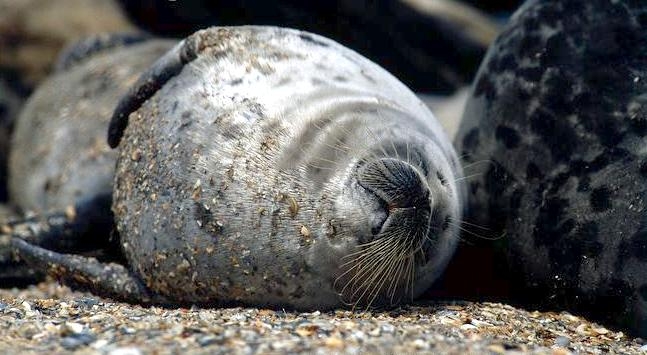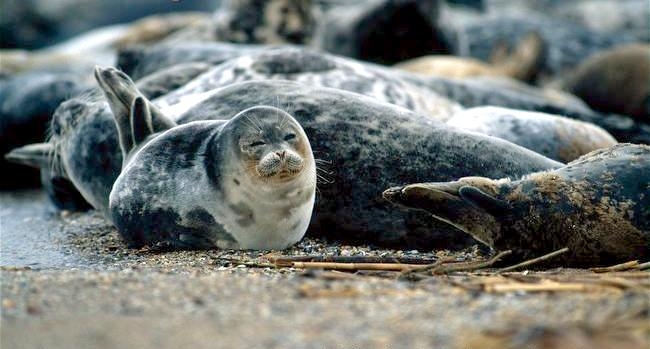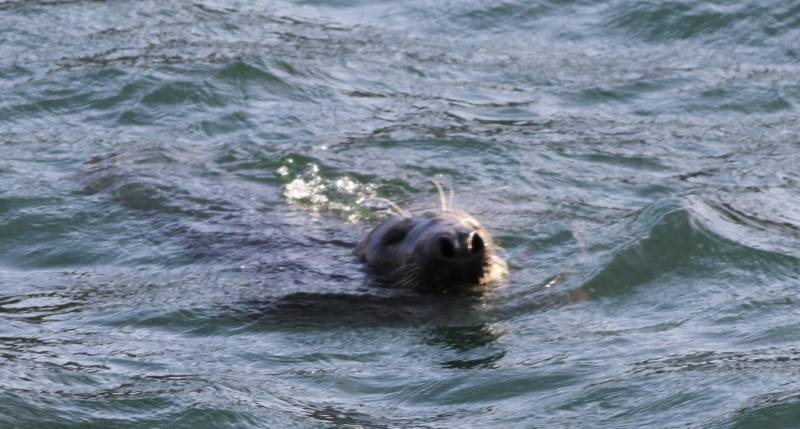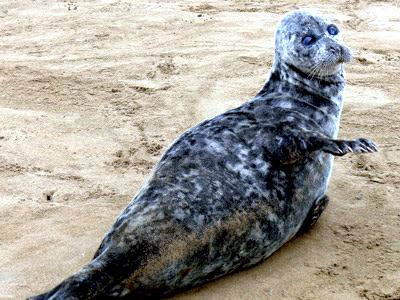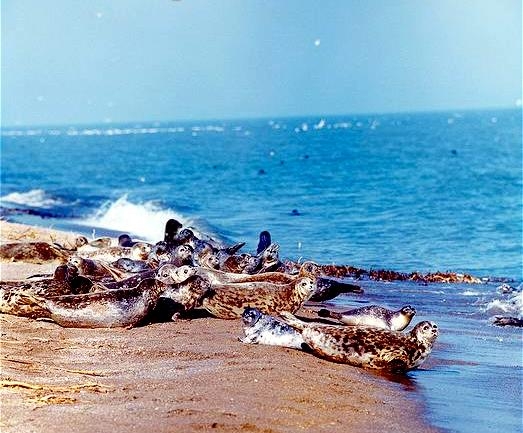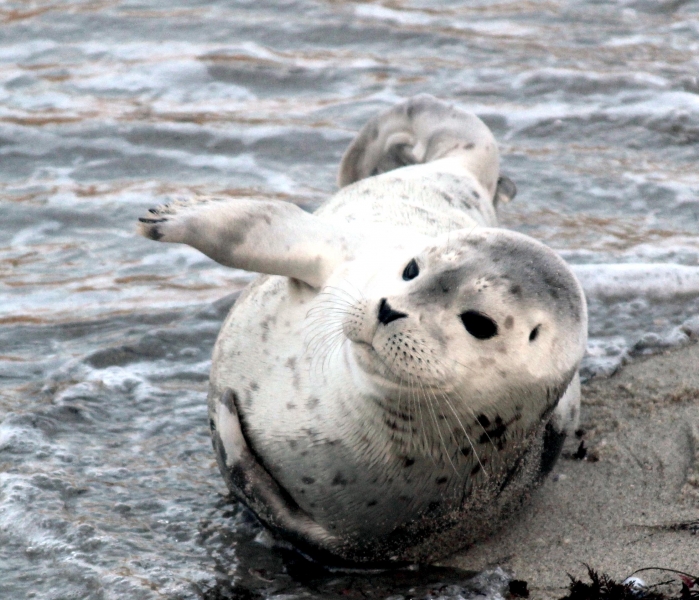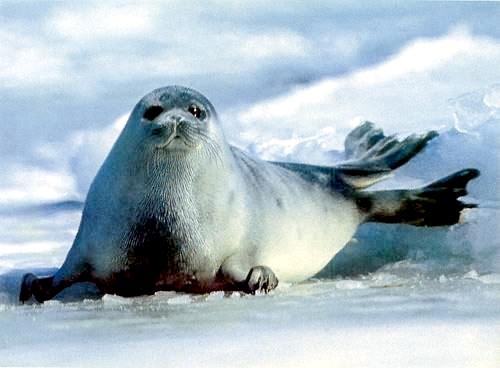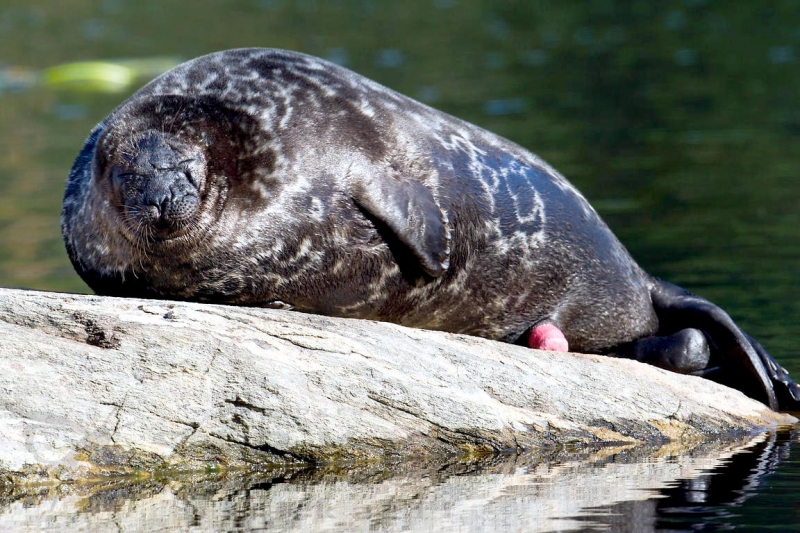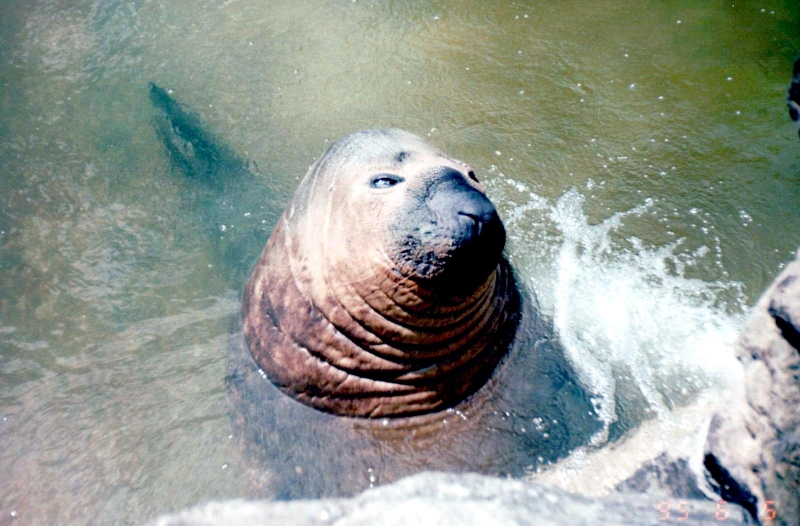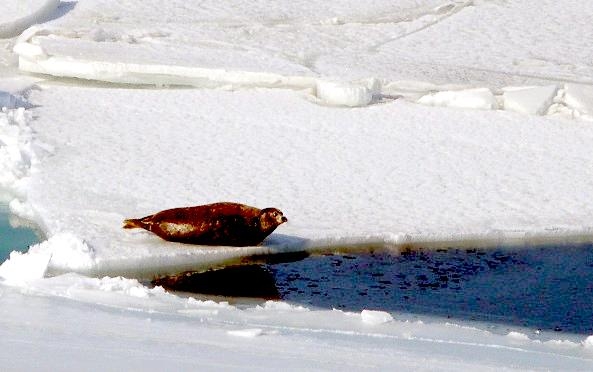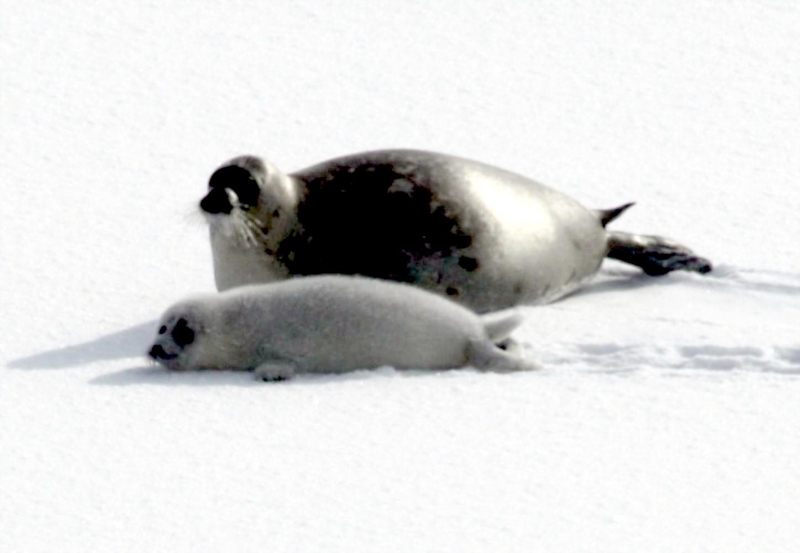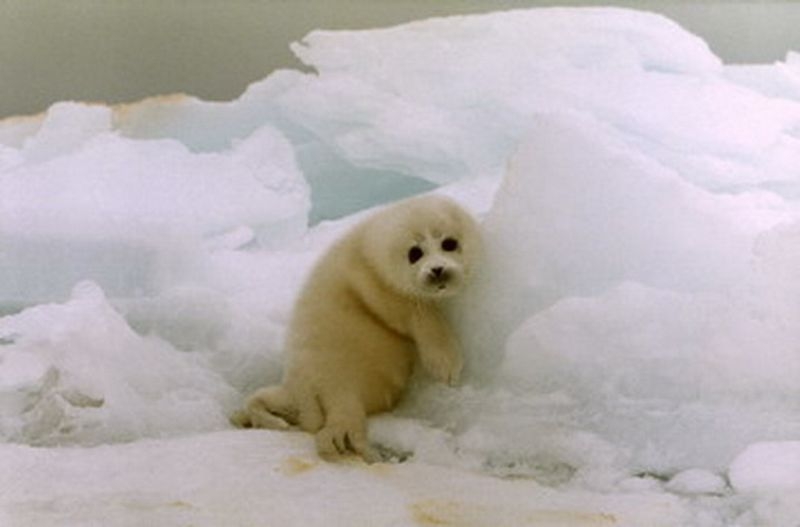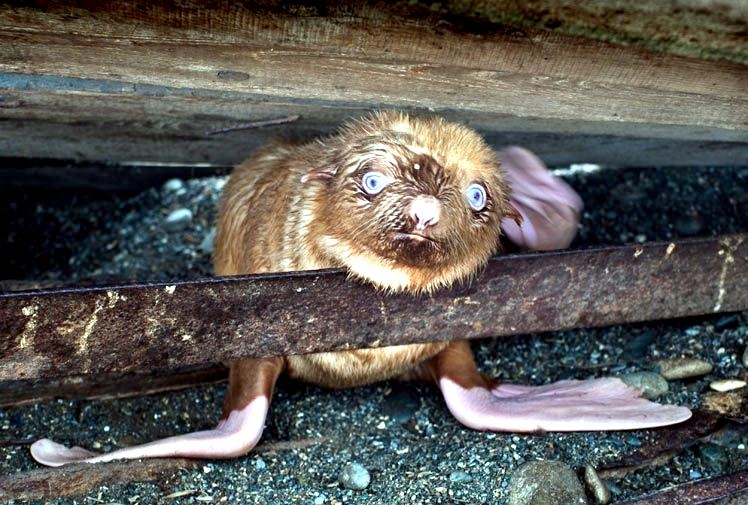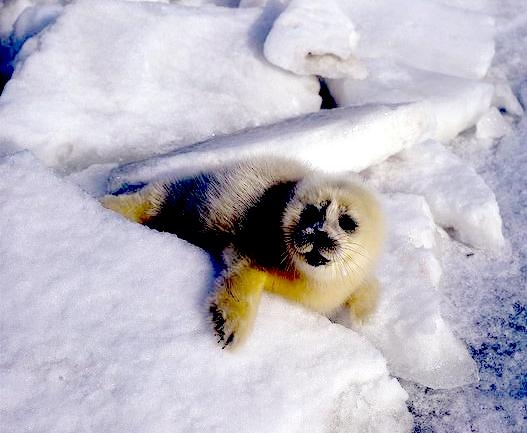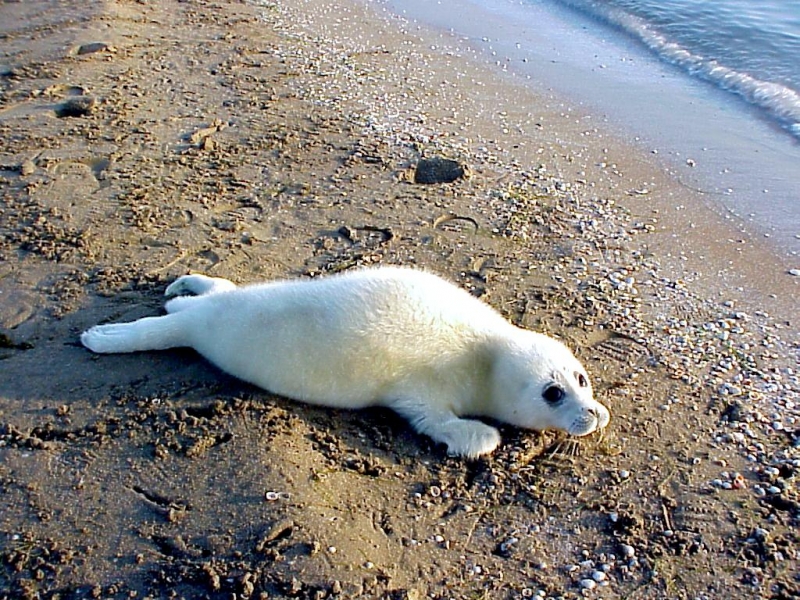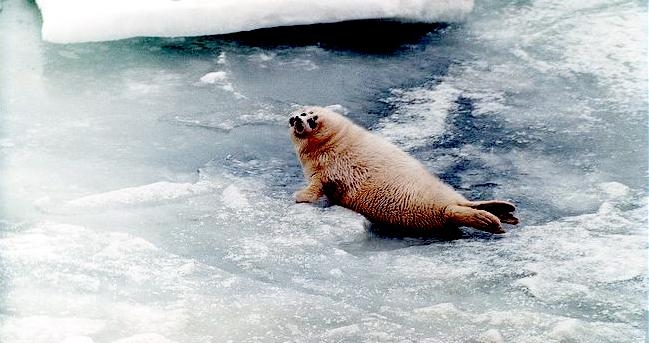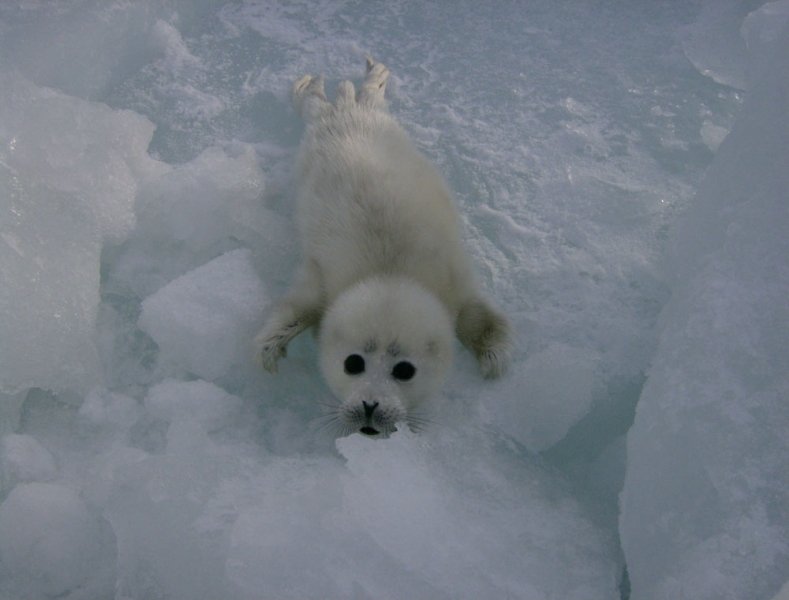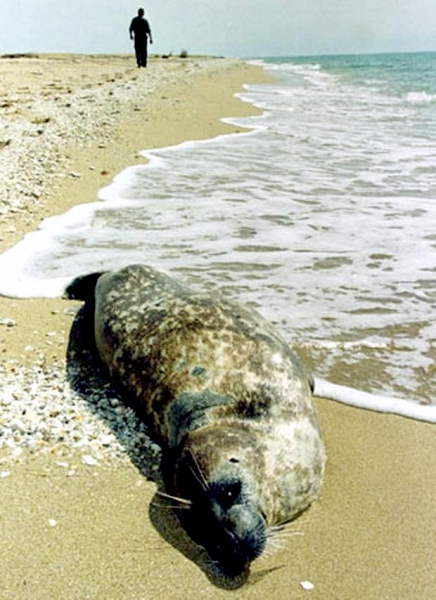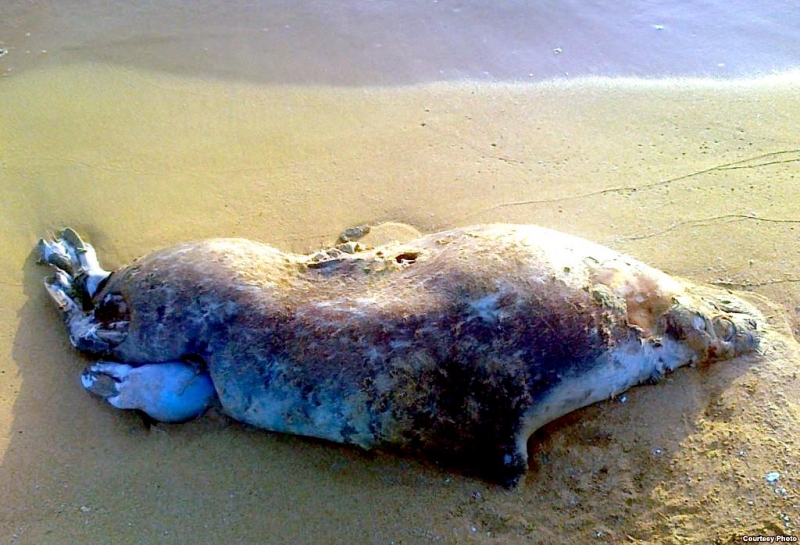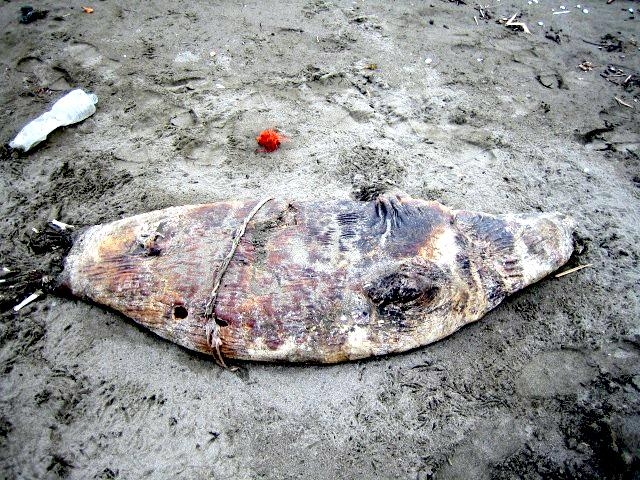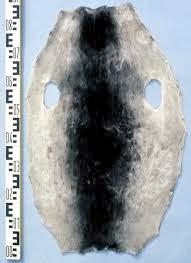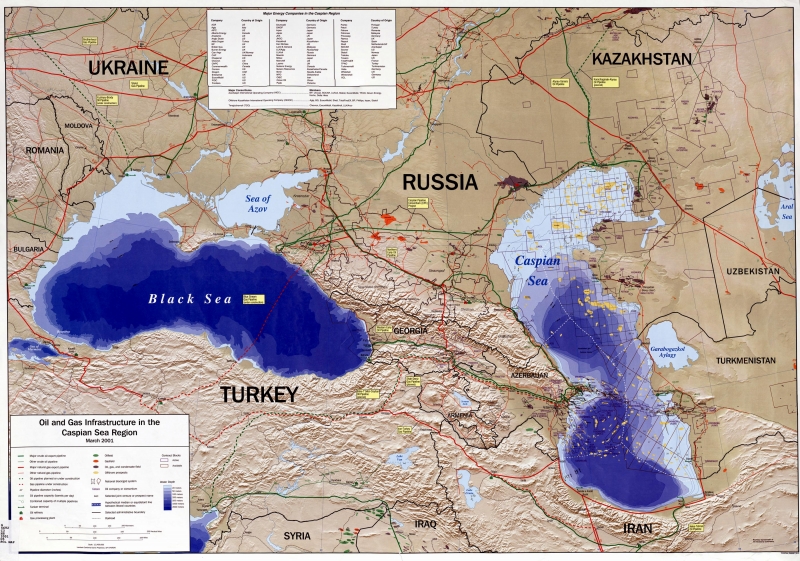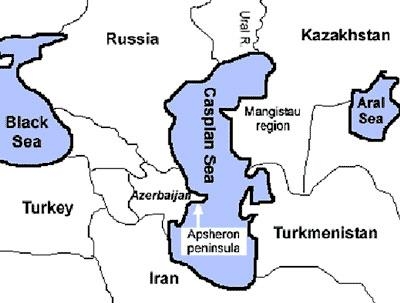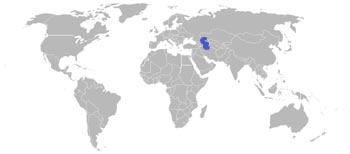“Pusa caspica”
The Caspian Seal is the only marine mammal in the Caspian Sea and is found no where else in the world. When Caspian Seals are born, they have a coat called a “lanugo” which is made up of long white to silver gray fur. The “lanugo” helps keep pups warm until they develop blubber. Newborn pups are between 64 to 79 centimeters in length and weigh about 5 kilograms when born. After 2 to 3 weeks, the “lanugo” begins to shed and is replaced by dark gray hair, a process taking 6 to 8 weeks. It is thought that, when pups are weaned at a younger age, they may not mature to be full size adults. Adult Caspian Seals are one of the smallest pinnipeds in the true seal family (Phocidae) varying in size & appearance. Males grow to 1.5 meters in length, which is slightly larger than females, who reach 1.4 meters. Both males & females have grayish-yellow to dark gray fur coats with a lighter underbelly. Males tend to be darker with dark spots over the entire body, whereas females are lighter in color with lighter spots on the back and not on the belly. The spots of Caspian Seals can also be encircled by light colored rings. Both males and females have relatively short flippers with moderate sized claws on their fore flippers and shorter, narrower claws on their hind flippers. The closest relatives of Caspian Seals is the Ringed Seal, the skulls of both species being morphologically similar. However unlike those of Caspian Seals, the bodies of Ringed Seals are covered with light rings against a dark background. Both species are similar in size and have a relatively long narrow snout. These 2 species do not inhabit the same areas, being separated by 1,600 kilometers in their global distribution. Both male & female Caspian Seals are monogamous. There appears to be a lack of fighting for a mate among breeding seals. In late autumn, Caspian Seals migrate to the northern part of the Caspian Sea where the water is shallow & frozen. Caspian Seals give birth in protected areas on ice sheets after a gestation period of about 11 months. There is no conclusive evidence to support this currently, but researchers believe that, since there is a long gestation period, there is a delay in implantation of the egg. Annual pregnancy rates are normally between 40% to 70%, but are currently at an all time low of 30%. This may be due to water pollution. In late January to early February, each female Caspian Seal gives birth to one pup. Female pups become sexually mature after 5 to 7 years, male pups become sexually mature after 6 to 7 years. Newborn Caspian Seal pups are not fully grown until age 8 to 10 years. Breeding begins a few weeks after the birth of last year’s pup, in late February to mid-March. Breeding occurs after weaning of newborn pups but can begin while pups are still nursing. After the breeding & molting season in late April, the weather in the north begins to warm with ice melting. Caspian Seals then migrate back to the southern part of the Caspian Sea. The southern part has deeper, colder waters where Caspian Seals spend the summer months. There is little available information about the parental care of Caspian Seal pups, except that newborns are weaned after 4 to 5 weeks of lactation. Given that Caspian Seals are asocial, there may be no collaboration among adults in raising newborn pups. As in the case of their closest relative the Ringed Seal as well as other seal species, males leave females soon after mating and fail to assist in rearing the newborn pups. Females will leave newborn pups to forage for short periods of time. In the wild, female Caspian Seals live to be on average about 35 years old; however, some have been recorded to live 50 years. Males have relatively short lives, around 26 years.
Caspian Seals are not usually found in captivity, except for a few zoos in Russia. There is a lack of data to document their life span in captivity. Caspian Seals tend to live in large groups during the mating season in summer & winter months. At other times of the year, these seals are solitary. Caspian Seals are shallow divers, typically diving 50 meters for about one minute although scientists have recorded Caspian Seals diving deeper and for longer periods of time. After foraging during a dive, they rest at the surface of the water. Little is known about communication among Caspian Seals. They are solitary in winter months, in summer months they make aggressive snorts or use flipper waving to alert other seals to keep their distance. Caspian Seals are one of the most numerous & widespread of northern pinnipeds. They are only found in the world’s largest inland body of saltwater, the Caspian Sea which is located in a small part of the Paleartic region between the countries of Russia, Azerbaijan, Iran, Turkmenistan and Kazakhastan. Caspian Seals migrate to different parts of the Caspian Sea during different seasons however, they never leave the landlocked Caspian Sea. From May to September, most Caspian Seals reside in the southern part of the Caspian Sea. In autumn, they migrate north to the ice sheets for breeding & birth of their newborn pups. There are various ideas to explain how Caspian Seals began inhabiting the Caspian Sea. One theory is that they are direct descendants of the Ringed Seal. During the Quaternary period during the present ice age when there were glacier ice sheets, Ringed Seals migrated south. When the ice retreated, seals were left isolated in the Caspian Sea. Others argue that Caspian Seals originally occupied an inland area of the Paratethys Sea during the Miocene & Pliocene epochs. Other researchers argue that Ringed Seals are derived from Caspian Seals and eventually migrated north to the Arctic.
Caspian Seals live in the temperate region of the Caspian Sea on islands or fast ice sheets. This landlocked, saltwater sea is 31 meters below sea level at latitudes of 37 to 47 degrees north. Caspian Seals can also be found in estuaries along the Caspian Sea. The mouths of the Volga & Ural rivers are the most popular of these estuaries. During winter months, Caspian Seals live at the northern reaches of the Caspian Sea on ice caps. There, females give birth & nurse their young. A small portion of the population breeds farther south in the winter on islands such as Ogurchinsky, near the Turkmenistan coastline. These breeding areas tend to be in protected places like pressure ridges away from wind and predators. Unlike their closest relatives the Ringed Seal, Caspian Seals do not give birth in lairs (holes in snow drifts); this behavior is likely an adaptation to ice that is not as stable as Arctic ice. During the spring & summer months, Caspian Seals migrate south to live on sand banks or rocky areas, usually on islands and usually not on the main coastline. The southern part of the Caspian Sea has deeper water where the Caspian Seal may dive to depths of 50 meters. The Caspian Seal is the only mammal found in the Caspian Sea and this species is near the top of the food chain. They consume many different types of fish and crustaceans; correspondingly, if seal populations decrease, fish populations may increase. Caspian Seal population density may also affect the numbers of their 2 main predators (besides humans), Steller Sea Eagles and wolves. Steller Sea Eagles snatch up newborn pups soon after they are born; consequently, during lactation pup mortality rate approximate 22%. In the northern part of the Caspian Sea, wolves prey upon Caspian Seals lying out on islands. Caspian Seals are primarily piscivores, who consume a variety of fish species depending on season & availability. Clupeonella (kilka) is the most abundant food source in the Caspian Sea accounting for 70% of their diet. When Caspian Seals inhabit shallow waters in the northern part of the sea (autumn & winter months), they prey mostly on sculpins, gobies and crustaceans. While in the deeper waters of the southern Caspian Sea during the summer months, they eat herring, carp and smelt. When Caspian Seals are found in estuaries, they eat large amounts of the freshwater species.
